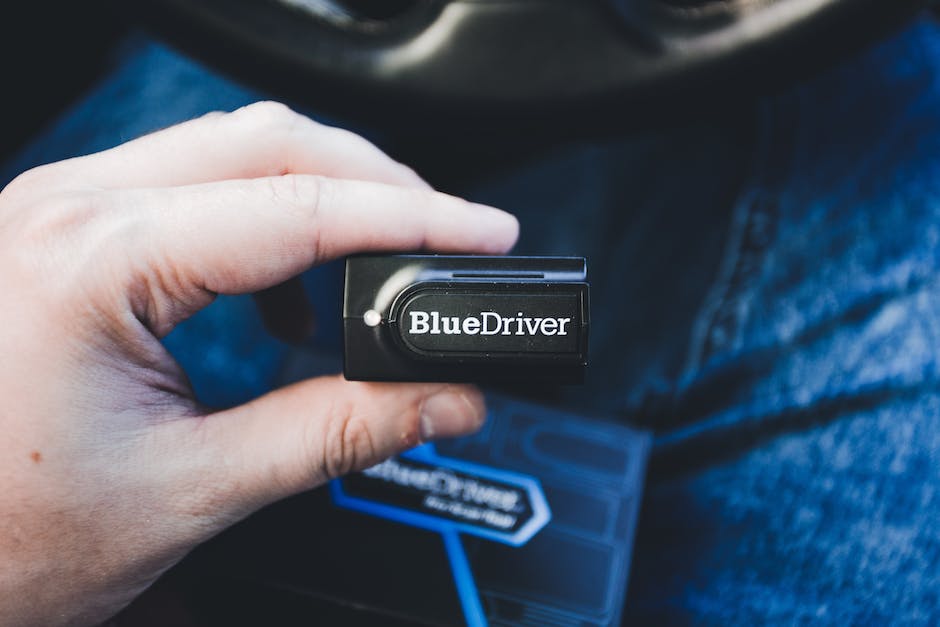In the complex world of automotive systems, understanding on-board diagnostic codes, known as OBD, can be a crucial tool for vehicle owners. Take for instance the P0161 OBD-II trouble code; not only is it specific to the second bank of the downstream oxygen sensor but it plays a significant role in the emission control system of your Chevy Silverado. Knowledge of what these codes mean and the issues they signify, can pave the way for efficient problem solving and effective vehicle maintenance. This will be explored through learning how to identify the symptoms of the P0161 code such as poor gas mileage and performance issues, as well as comprehending possible causes like faulty O2 sensors, wiring difficulties, or even exhaust leakages.
Understanding OBD Codes
OBD Codes 101: Unraveling the Mystery in a Chevy Silverado
On-Board Diagnostics (OBD) Codes: they’re the little flashing indicators that often present a puzzle when they light up the dashboard in a moment of vehicular discontent. For owners of the Chevy Silverado, understanding how these codes work can prove indispensable in our tech-driven world. Let’s dive right into the details.
OBD codes are essentially the language computers in vehicles like the Chevy Silverado use to communicate. Simply put, they’re codes thrown by the vehicle’s computer indicating distinct issues the vehicle is facing. Their function? To alert drivers if a problem exists, even if that problem isn’t immediately evident.
Originally, manufacturers used proprietary systems and their codes differed. However, with the introduction of OBD-II in 1996, standardization occurred. Now, all vehicles sold in the U.S., including the Chevy Silverado, use the same codes.
General OBD codes are split into four categories – powertrain (P), chassis (C), body (B), and network communication (U). Given the Chevy Silverado is essentially a sophisticated array of electrical and mechanical systems, problems could relate to any of these categories.
A powertrain code, for instance, might indicate a malfunction with the engine, transmission, or emissions system. Chassis codes point to issues with systems like brakes or airbags. Body codes often relate to functions such as the power windows or wipers, while network communication codes pertain to interactions like those between the engine control module and brake control module.
In addition to these general codes, manufacturers have assigned unique enhanced OBD codes (also starting with P, C, B, and U). These are more precise and specific to the vehicle make or model, providing a very targeted understandings of the vehicle’s problems.
When an issue arises in the Chevy Silverado, the vehicle’s computer logs a relevant code and triggers the check engine light. Employing an OBD-II scanner allows the code to be read, revealing the nature of the problem. For instance, a P0300 code indicates a randomized or multiple misfire happening in the engine.
Understanding the intricacies of OBD codes doesn’t inherently fix vehicle problems, but it can provide critical knowledge for knowing when service is needed and help diagnose what sort of service may be required. It’s a testament to our technological age, where even our vehicles communicate with us in a language of codes, signals, and alerts. By cracking the code, we can keep our Chevy Silverados running smoothly and efficiently, reinforcing the benefit of technology in everyday life.

Symptoms and Causes of a P0161 Code
Delving into the specifics of OBD codes can unravel intricate details pertinent to your vehicle’s powertrain, body, chassis, or communication network. Case in point: the P0161 trouble code, commonly observed in Chevrolet Silverado vehicles. This faulty code typically points to issues pertinent to the Bank 2 sensor 2 oxygen (O2) sensor. Notably, it categorizes as a Powertrain code.
The P0161 code explicitly signals that the powertrain control module (PCM) has recorded an under-performing O2 sensor heater circuit. Specifically, following the engine start, O2 sensors must reach a certain temperature within a stipulated time-frame. If not done so, an issue is identified, the PCM triggers the P0161 code, and the Malfunction Indicator Lamp (MIL) flashes.
Identifying Symptoms:
Speaking about the potential symptoms of the P0161 code in Chevy Silverado, these could consist of:
- A Service Engine Soon warning light or MIL appearing on the dashboard. This should not be ignored as it serves as a warning of potential issues with your vehicle.
- Poor fuel efficiency is another likely symptom if the P0161 code is triggered. The PCM tends to enrich fuel mixture rendering a dismal fuel-economy.
- A discernibly rough vehicle idling or running may also hint at the presence of this faulty code.
Investigating Causes:
There are several vital factors that can trigger the P0161 code in your Chevy Silverado:
- Faulty O2 sensor heater: This can arise from repeated short trips that lead to insufficient heating of the O2 sensor.
- Heater circuit malfunction: This can be due to a blown fuse, damaged wires, or corroded connectors in the heater circuit that control the O2 sensor.
- PCM failure: Although rare, it is conceivable that the P0161 code is caused because of an issue with the PCM itself.
Understanding the potential symptoms and causes of the P0161 fault code assigns you a more proactive role in the management of your Silverado’s health. Armed with this knowledge, you can assess and diagnose certain vehicle issues before they escalate, ensuring the longevity of your truck.
With technology continuously evolving, there has never been a better time to take advantage of the information at our fingertips. Whether through the use of an OBD-II scanner or understanding error codes like P0161, technology continues to provide unprecedented access to a world previously exclusive to seasoned mechanics.
And remember, cars, like humans, communicate their health conditions through symptoms, and if these are promptly diagnosed, can ensure improved vehicle performance, longevity and, in turn, elevate your driving experience to new levels.

Troubleshooting P0161 Code
Troubleshooting the P0161 Code
Acting promptly when the P0161 code appears within a Chevrolet Silverado is imperative for the vehicle’s performance and longevity. Bearing the status of a Powertrain trouble code, P0161 signifies an issue with the Oxygen (O2) sensor in Bank 2, Sensor 2. This sensor is meticulously designed to monitor the level of oxygen in the exhaust gases exiting the engine. However, when the P0161 code is triggered, it indicates an irregular heating element performance leading to higher emission output and reduced fuel economy.
Let’s look at how to troubleshoot and resolve this issue:
Step 1: Confirm the Code
Using an OBD-II scanner, confirm the P0161 code. Ensure the scanner tool is compatible with your Chevy Silverado model. Connect it to the vehicle’s diagnostic port, usually located under the dashboard, and follow the user guide to read the trouble code. It’s crucial to confirm that the P0161 code is present before proceeding with further diagnostic procedures.
Step 2: Conduct a Visual Inspection
Problems linked to wiring are often the root cause behind the P0161 code. Start an initial visual examination of the wirings, connectors, and the Oxygen sensor. Check for signs of burns, damage, or corrosion. If such defects exist, replacing the compromised component can swiftly solve the issue.
Step 3: Test the Sensor’s Heater Circuit
Utilize a digital multimeter to conduct an exhaustive examination. Check for continuity and resistance value of the Bank 2, Sensor 2 oxygen sensor’s heater circuit. The manufacturer’s specifications, readily available in the vehicle’s service manual, will provide an idea of the correct readings. If the results veer off from the specific standards, replace the sensor.
Step 4: Check The Power and Ground Circuits
The oxygen sensor’s heater circuit should receive power from the relay and have a ground. Both can be checked with a multimeter or a test light. Once again, any deviation from the specification mandates an immediate repair or replacement.
Step 5: Evaluate the Control Circuit
Ensure that the engine control module is controlling the O2 sensor heater’s current by examining the control circuit. A wiring problem here could result in the P0161 code being triggered.
Step 6: Clear and Test
After you’ve completed all corrective measures, utilize the OBD-II scanner once again to clear out the P0161 code. For a thorough validation, drive your Silverado for a couple of days, observing the vehicle’s functions and performance. If the code does not reappear, congrats – you’ve successfully managed to troubleshoot and resolve the P0161 issue in your Chevy Silverado.
Remember, the engine control unit meticulously records all processes affecting emissions. Therefore, swift diagnostic actions linked to the P0161 code assists in intensifying the vehicle’s performance and maintain high environmental standards. It’s a given that technology has vested us with advanced tools and detailed tech manuals – so let’s put these to good use and enjoy our ride. Keep that Silverado roaring healthily down the road!

After familiarizing oneself with the P0161 code symptoms and causes, an understanding of basic troubleshooting techniques is a handy and often necessary piece of knowledge. From learning how to reset the illuminated check engine light to understanding how to replace the oxygen sensor and examining wiring issues, these practical steps can often counter the impact of the P0161 code. Even the ability to identify exhaust leaks, a potential cause, can lead to timely resolution thereby preventing future mishaps. As a Chevy Silverado owner, understanding, identifying, and rectifying the P0161 code can significantly aid in ensuring smoother drives and extended vehicle lifespan.

Tomas is a retired Chevy Auto Technician that brings decades of hands-on experience and expertise to the table. He’s also a father to two incredible daughters. He enjoys using his knowledge and experience to help you solve and find reliable information on Chevrolet vehicles. Whether it’s troubleshooting engine problems or providing tips for maintenance, Thomas is committed to helping Chevy owners keep their vehicles running smoothly and safely.




